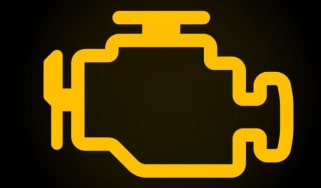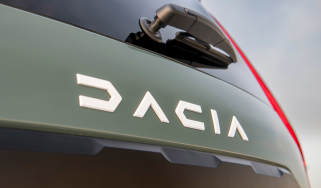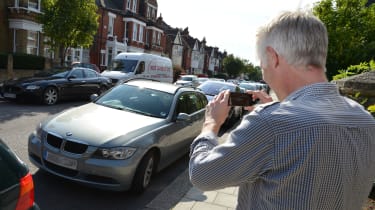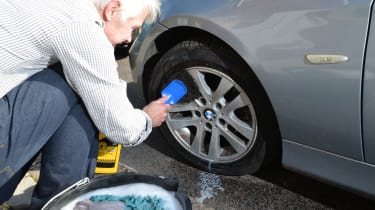Best way to sell a car: the complete guide
Selling your car can sound like a headache, but we’ve outlined the best practices to help you get a fair price quickly and safely
If you’re planning to purchase a new car, chances are you’ll need to sell your current car first. This can be a daunting task for some, and can leave you with many questions. How much do I sell it for? Where’s the best place to sell it? How do I transfer ownership?
Fortunately, selling your car has never been easier, thanks in part to the internet and popular car-buying companies. There are positives and negatives to every car-selling option, but every car seller wants to get the best deal for their used vehicle. We’ve covered the best practices to follow in order to get the best price and stay safe – read on to find out more.
Part-exchange
If you’re buying your new car through a dealer, you may be offered the option to part-exchange your old car. Part-exchanging allows you to sell your old and buy your new car from the same dealer quickly and safely all at the same time. The dealer will discount the agreed value of your old car from the purchase price of your new one, so only one transaction takes place.
The main benefit of part-exchanging is that there’s no overlap in the ownership from your old car to your new one. This often means you can arrive in your old car and drive home in the new one on the same day. This can save you from having to tax and insure two vehicles at once, or help you avoid having a period without a car.
However, you’re unlikely to get the best deal for your old car when part-exchanging. Dealers will usually offer a ‘trade price’ – a relatively low value for your car – to ensure they can sell it quickly and for a small profit. The dealer will take into account any damage that needs repairing, such as scratches, dents or kerbed alloy wheels, so the agreed value of your car may not be as high as you’d hoped.
However, many car sellers are willing to make this sacrifice for the convenience and security that part-exchanging provides. For this reason, it remains one of the most popular ways to sell a car.
Guaranteed sale websites
There are many guaranteed sale websites today that also offer a hassle-free way to sell your car. Different companies provide a slightly different service, but the majority will estimate your car’s value online and conduct an in-person inspection to verify the car’s condition. They will then purchase your car from you and transfer the money to your bank account within a few days.
The final offer for your car will usually be lower than the initial online estimate, as the inspection often picks up any minor imperfections, such as dings and scratches. It may be possible to get an even better price by selling privately, but the benefits of guaranteed sale websites are speed, simplicity and safety. Remember, the final decision always rests on the seller, so if you’re unhappy with the price offered, you can walk away and visit a different company instead.
Our parent site, Carwow, offers a simple guaranteed-sale car selling service. Simply enter the basic details about your car and its condition, and dealers across the country compete to offer you the best price. To find out how much your car is worth, visit the Carwow website and enter your registration number.
Selling a car privately
Selling your car privately has the potential to land you the best price, but it's the least straightforward method, taking time and effort. Selling a car privately can be accomplished in many ways, from finding a friend, work colleague or relative who wants to buy your vehicle, or advertising or auctioning it online. Each has positives and negatives, and you will need to communicate with potential buyers to make a sale.
Where to advertise a car privately
If you want to sell your car privately, it's important to cast your net as widely as possible by advertising on a national website. There are a lot of options, and some even cater for a niche audience, which is ideal if your car is a classic or has a particular following of loyal enthusiasts.
Online auctions such as eBay have become hugely popular. They give you the option to set a reserve price (the minimum you’re willing to accept for a sale to go ahead), and if two or more buyers really want your car, the sale amount can be pushed up by a bidding war. However, online auction sites can make their money by taking a percentage of the sale price as their fee, so you’ll need to take that into account.
Classified sites such as Gumtree and Facebook Marketplace are also popular, partly because they’re free for private sellers to advertise on. It’s possible to reach a large audience, but because these sites tend to sell everything from computer games to top hats, they’re more suited to selling cheaper cars.
Writing the advert
Regardless of where you decide to advertise, there’s some essential information you’ll want to include to inform buyers:
- Make, model, engine, trim level and bodystyle (e.g. Volkswagen Golf 2.0 TDI SE hatchback)
- The year it was registered
- Gearbox type and the number of gears (e.g. manual six-speed)
- Current mileage
- Engine size
- Fuel (petrol, diesel, LPG, hybrid, plug-in hybrid or electric)
- Colour
- Remainder of MoT
- Service history
- Remaining warranty period (unless it has already expired)
- Number of previous owners
- Any defects, damage or problems
Buyers are likely to be particularly interested in the car’s service history, so make sure to state if it’s a full or partial history and point out if the vehicle has always been tended to by a main dealer (referred to as a full main dealer service history), as this is particularly desirable.
It’s also important to list the equipment fitted to the car, including any optional extras or desirable upgrades such as sat-nav, Bluetooth connectivity, air-conditioning or a tow bar.
Always be honest about your vehicle and any faults or damage it has. Trying to hide any issues can waste time, because potential buyers will most likely not want to purchase your car if it isn’t as advertised, even after a test drive.
While this is a lot of information, try to be as snappy and concise as possible. Many online adverts limit your word count, so making your listing easy to digest is always best. Avoid writing in all capital letters, too.
Setting the price of a used car
Setting a price for your car can be a tricky task – ask for too much and your phone might never ring, but ask for too little and you could be left out of pocket.
There are a number of factors to consider when pricing your car. The car’s age, condition and mileage have the most apparent effect on the price, but other factors include where you live (cars are generally pricier in the south and cheaper in the north and some rural areas). Even the time of year can have an impact, with demand often increasing for SUVs in winter, while convertibles are more popular in spring and summer.
Used price guides are available at newsagents and online and can be a good starting point, with dealerships often using something similar. However, you can now get free online valuations provided by national classified websites. It’s also worth checking out online ads for cars similar to yours – even narrowed down to your local area – to see how they are priced and to ensure your car is priced appropriately.
Keep in mind that most buyers will try to negotiate a final sale price after they’ve inspected and test-driven the car, so you’re unlikely to get the full advertised price. We’ve covered our top tips for haggling below.
Taking photos
Photos are the first thing a prospective buyer will see, so it’s worth investing some time (and money) to get the best shots possible. It might sound obvious, but clean the car inside and out, or get it professionally valeted. Private buyers want to feel like they’re getting a good-as-new car, even if it’s a few years old. It will also reinforce the fact that the car has been cherished and well looked after by its keeper.
Park your car somewhere flattering, where you can easily get the whole vehicle in the shot without lots of other vehicles or street furniture in the frame. Ensure the conditions are suitable, too, with dry weather and plenty of light.
We’d recommend including the following exterior pictures:
- Stand diagonally away from the front wheel, so both the nose and side are in shot
- Repeat this for a photo of the rear of the car
- Next, take a picture of each side of the car in profile
- Then a picture of the nose and tail of the car from directly in front and behind
Interior photographs should include:
- The centre console
- The front seats
- The rear seats
- Any items of desirable equipment, such as a sat-nav screen
- The instrument cluster, preferably showing the car’s mileage
It’s also worthwhile including pictures of any damage mentioned, as this is often much more informative than a written description and will help buyers proceed accordingly.
Preparing your car for sale
Just as a dealership will always display cars in pristine condition, private buyers also need to show their car in its best light. Ensure you clean the car or have it valeted inside and out before buyers come to see it. Even buyers of older cars will want the impression it’s new to them, which won’t be the case if your personal effects are scattered around the interior.
If there are faulty parts, scuffed wheels or dented panels, it can be worth getting them repaired or replaced before putting the car on sale, especially if they’re fairly inexpensive jobs. Do this and the car will attract more buyers, command a higher price and give fewer reasons to haggle the price down. However, make sure to get a quote for any repair work beforehand to make sure you don’t spend more than you’re likely to recoup when selling the car.
Many buyers will look for an MoT with as long as possible remaining, because it shows the car is less likely to need repairs or maintenance for up to a year and that it’s safe to drive on the road. At the cost of around £50, a new MoT is well worth considering.
Lastly, once your car is spic and span, ensure all its paperwork is kept together in a safe place, including its service stamps, receipts for repairs, parts and servicing and MoT certificates. Most importantly, you’ll need the V5C registration document (sometimes referred to as the logbook) to sell the car, and it proves you are the registered keeper.
Dealing with buyers
Once the advert is live, you’ll hopefully receive phone calls or e-mails from potential buyers. Write down the name and number of callers in case you sell the car before their appointment or you need to rearrange. We’d recommend trying to avoid starting negotiations before they see the car, as this could put you at a disadvantage during the final negotiation.
Ensure all viewings are at a location you choose and arrange for a family member or friend to join you for added safety. Never take the vehicle to an address arranged by the buyer.
Most buyers will want to thoroughly examine the car inside and out, as well as looking over the corresponding paperwork, so budget plenty of time and don’t rush them. Many buyers will also request a test drive, which has its own set of important rules.
Nobody can drive a car without proper insurance, so be sure to ask the buyer to bring proof of insurance along with them. If it’s unclear, call their insurance company to check they’re covered to drive your vehicle. If someone were to crash your car on a test drive without insurance, you’d be liable for repair costs and could even have committed an offence. It’s possible to be fined up to £5,000 and receive from six to eight penalty points for allowing an uninsured driver behind the wheel of your car.
Never let a buyer test-drive the car without you in the vehicle and take a friend or family member with you for extra security if you can. Always be sure where the keys are and never leave the buyer alone with the keys and car, even if it’s just to grab something from inside the house – there’s nothing to stop them from driving off.
Allow the buyer to choose the test-drive route – especially if they’re familiar with the area – but be clear how long or far you’re happy for the test drive to last and, if necessary, ask them to stop and head back. It’s normal for a buyer to want to test that the car accelerates correctly, and they may want to test the brakes, but if you feel they’re driving irresponsibly or abusing the car, ask them to stop.
Once you get back, wait for the buyer to get out of the car first, or ask them to stop the engine and pass the keys to you.
Haggling
Haggling the final price is accepted as a normal part of buying or selling a used car, so it’s important to factor in this negotiation when choosing how much to advertise the car for.
Remember, haggling is purely a business transaction, so stay as calm as possible and listen to each criticism so you can try to counter it to keep your price high. Buyers will use any chance to reduce the price, including damage or impending maintenance, but you should decide before a viewing on the lowest price you’ll accept and keep it in mind. If you can’t agree on a fair price for both parties, others could be happy to pay more.
If the price is very close – say £50 or so – to your minimum, bear in mind it could cost more in advertising, insurance, tax and valeting the car again to hold out for the next buyer.
Paperwork, V5C and the DVLA
If a sale is agreed, you’ll need to fill out the new buyer’s section of the V5C registration document (which has instructions printed on it) and post it to the DVLA. It’s now possible to do this online, too.
Create a receipt outlining the car’s details, price, date of sale and stating that it was ‘sold as seen’. Provide the buyer with one and keep a copy yourself.
Lastly, don’t forget to tell your insurance company you’ve sold the car, and if it has any outstanding finance, you’ll need to settle the loan.
Can I sell a car without a V5C?
A car should never be sold without a V5C, because not only will the buyer not be able to verify that you’re the registered keeper and that it’s yours to sell, they won’t be able to tax the vehicle without its V5C, either.
 What is a V5C? Your car’s log book explained
What is a V5C? Your car’s log book explained
If you’ve lost the V5C or it’s damaged, you’ll need to apply for a new one from the DVLA. It can take up to five days to issue a new one, provided you’re the registered keeper and order over the telephone. Alternatively, you can send a completed V62 ‘Application for a vehicle registration certificate’ to the DVLA, but this can take up to six weeks. Either costs £25.
Road tax refund
While selling a car with several months' tax remaining used to be a selling point, it’s no longer possible. Now, when you inform the DVLA of your sale, any remaining tax will be refunded to you automatically. The new owner will be responsible for taxing the vehicle.
Taking payment
Today, one of the most popular payment methods when selling a car privately is an online bank transfer. It's quick, secure and can be done in minutes through a smartphone banking app. You will be able to see once the money has been transferred into your account, although for extra peace of mind, you can ring your bank to check that the payment has been made successfully before handing over the car. Online payment systems such as PayPal are also a growing and secure way to make payments and are particularly popular with users of websites such as eBay.
Cash is still commonly used for private sales, particularly for lower-value used cars. Be warned that large amounts of cash can include fake or stolen notes, which are difficult for private sellers to spot. To avoid being left short-changed, you can carry out the exchange at your local bank, where a member of staff can confirm the amount of cash and its authenticity, but to take advantage of this service you’ll need to arrange the deal during the bank’s opening hours.
A personal cheque, building society cheque or banker’s draft are other possible alternatives, but they aren’t as desirable as cash because they can also be forged or ‘bounce’, with not enough funds for them to go through.
The most important thing with any of the above payment methods is to pay the funds into your bank and never release the car to the buyer until the correct amount has cleared. Just seeing the money isn’t enough, always ask the bank if funds can be drawn against the payment to ensure it has cleared.
Why not read our guide to buying a used car from a car broker?
Most Popular

Engine management light: top 5 causes of amber engine warning light

Best new car deals 2024: this week’s top car offers

Dacia introduces seven-year ‘Zen’ warranty for new and used cars
Tips & advice










